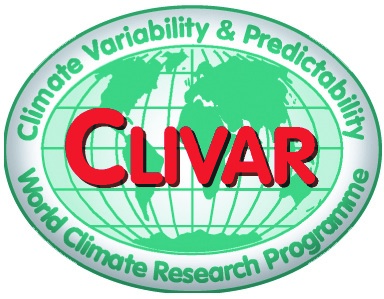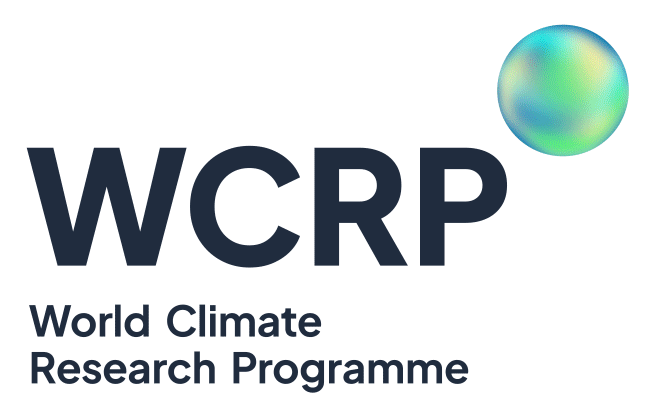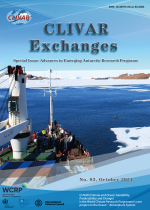CLIVAR VAMOS Workshop on Modeling and Predicting Climate in the Americas
Petropolis, Brazil
Monday, 4 June, 2012 - Wednesday, 6 June, 2012
Venue: Laboratorio Nacional de Computação Cientifica (LNCC)

Background
The overarching goal of VAMOS modeling is to improve the prediction of warm season precipitation over the Americas, for societal benefit, and to assess the implications of climate change. Success in meeting this overarching goal is critical to the new World Climate Research Program (WCRP) strategic framework. In meeting this goal, the VAMOS program works:
- To describe, understand, and simulate the mean and seasonal aspects of the American monsoon systems,
- To simulate American Monsoon System lifecycles, including diurnal cycles and the intraseasonal, interannual and interdecadal interactions with, and influences on, them,
- To investigate American Monsoon System predictability and to make predictions to the extent possible,
- To improve the predictive capability through model development and analysis techniques, and
- To prepare products with a view to meeting societal needs, including studies of the impacts on the American Monsoon Systems of scenarios of climate change.
To achieve its objectives, VAMOS has adopted a multi-scale approach, which includes monitoring, diagnostic and modeling activities on local, regional, and continental scales. In this multi-scale approach, local processes are embedded in, and are fully coupled with, larger-scale dynamics.
The modeling strategy which was approved in 2009 is organized into four science themes: (A) simulating, understanding and predicting the diurnal cycle, (B) predicting and describing the Pan-American monsoon onset, maturation and demise stages, (C) modeling and predicting SST variability in the Pan-American Seas, and (D) improving the prediction of droughts and floods. It is clear that all four of these science themes are interdependent; indeed, some of the scientific questions such as issues related to scale interactions transcend all four themes. Nevertheless, this organizational structure provides the focus required to tackle the most important modeling issues.
The VAMOS panel is pleased to announce the CLIVAR VAMOS Workshop on Modeling and Predicting Climate in the Americas to be held at the Laboratorio Nacional de Computação Cientifica (LNCC) in Petropolis, Brazil, on June 4-6 2012.
Goals of the workshop
The main goals of this workshop are to review the state of modeling research in the VAMOS domain related to: (i) sub-seasonal to multi-decadal climate prediction and (ii) understanding of dynamical and physical processes underpinning potential sources of predictability, variability and climate change. In order to advance prediction at all of these time-scales it is essential to develop, use and understand models that integrate all relevant physical and dynamical processes. This integrative approach is a core element of the Modeling Plan for VAMOS as it seeks to improve the prediction of warm season precipitation over the Americas, for societal benefit, and to assess the implications of climate change.
Workshop Themes
The workshop will be organized following the Modeling Plan for VAMOS. That is the workshop will have core themes:
a) Simulating, Understanding and Predicting the Diurnal Cycle
b) Predicting the Pan-American Monsoon Onset, Mature and Demise Stages
c) Modeling and Predicting SST Variability in the Pan-American Seas
d) Improving the Prediction of Droughts and Floods
While these core themes are focused on the VAMOS region, special emphasis will be placed on assessing how these aspects of the Pan-American monsoon are represented in global models. The workshop will also emphasize understanding and predicting extreme events in the VAMOS region, and how the VAMOS research contributes to climate change assessments.
In addition to reviewing the current state of modeling research, the workshop will have talks and discussion sessions specifically designed to develop the future of VAMOS modeling research as a fundamental contribution to the WCRP.
Abstracts should be prepared using the following template and submitted to Carlos Ereño (carlos_ereno@yahoo.com) by April 15, 2012
Logistic information
Meeting Location:
The meeting will be held at the Laboratorio Nacional de Computação Cientifica (LNCC) in Petropolis, Brazil:
Av. Getúlio Vargas, 333
Quitandinha, Petrópolis
CEP: 25651-075
Tel. (24) 2233-6000
Fax. (24) 2231-5595
See the map. Highlighted is a commonly used route from Casa do Sol Hotel (A) to the meeting place at LNCC (B)
You can get more information about Petropolis at:
http://gobrazil.about.com/od/braziliancities/p/petropolis.htm
http://you.travel/Petr%C3%B3polis
Lodging
A block of rooms has been reserved for the period of June 4-8, 2012 at the Hotel Casa do Sol, located very close to LNCC, See the map
Av. Ayrton Senna, 115
Quintadinha – Rio de Janeiro
Tel/Fax: + 24 2244 4500
Room rates:
- Single standard - R$164,00
- Single deluxe - R$175,00
- Double standard - R$197,00
- Double deluxe - R$208,00
The Brazilian Real (R$) is the currency in Brazil (BR, BRA).
You can check the exchange rate conversion at http://coinmill.com/BRL_USD.html
For reservations meeting attendees can call (24) 2244 – 4500, or email: info@casadosolhotel.com.br. Let the reservations agent know that you are reserving a room for the VAMOS meeting in June 2012.
We recommend participants to make their reservations as soon as possible.
Transportation from the airport
There are plans for providing transportation from Galeão International Airport, Rio de Janeiro to LNCC, Petropolis, around 50 minutes ride. Meeting attendees who want to use this service should inform their flight arrival and departure time to Mrs. Tathiana Tapajóz Figueiredo tathi@lncc.br cc to Carlos Ereño carlos_ereno@yahoo.com
Agenda
Last update: June 2, 2012
| Attachment | Size |
|---|---|
| VAMOS_abstract_form.doc | 22 KB |
















